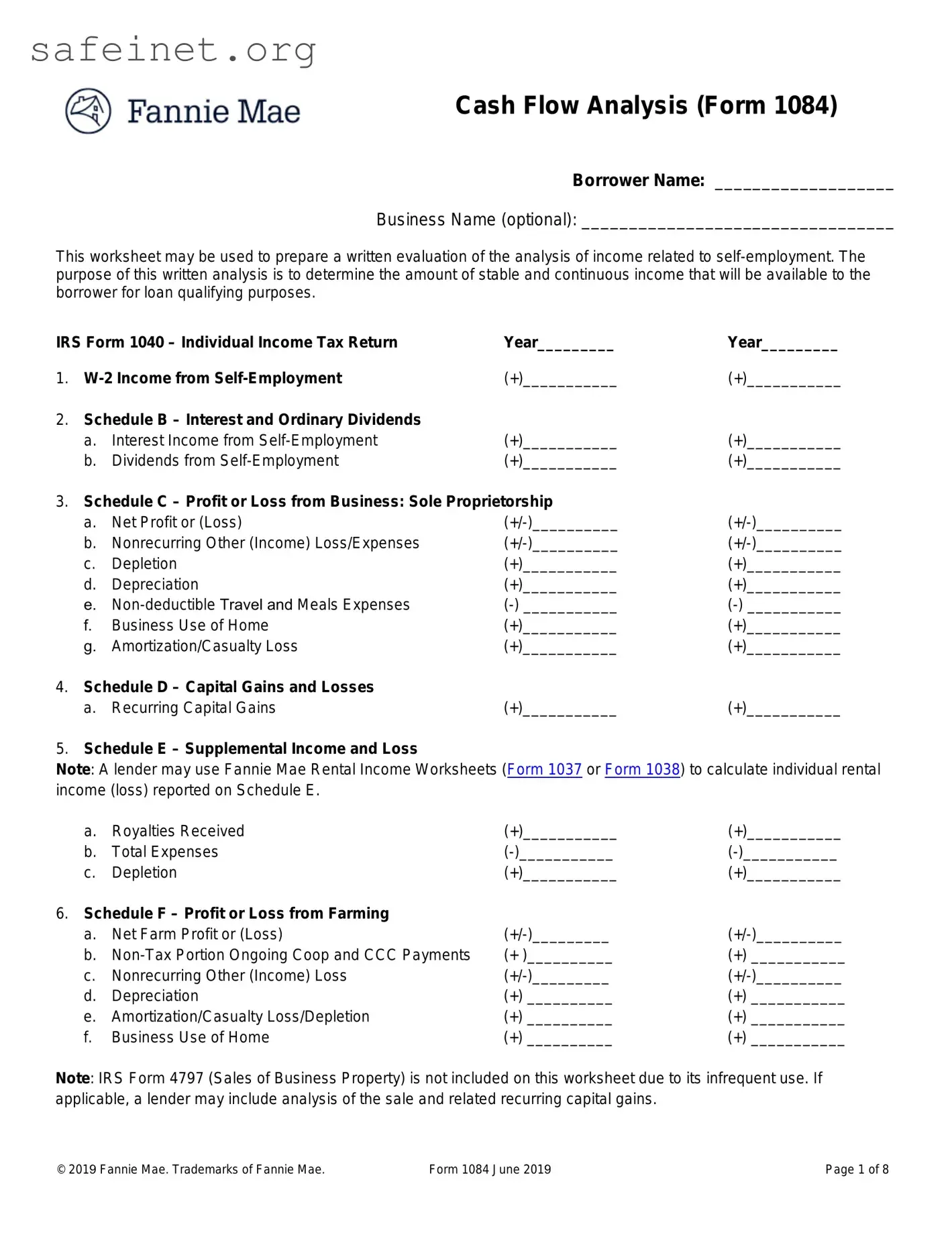IRS Form 1120S – S Corporation Earnings
9.Schedule K-1 Form 1120S – Shareholder’s Share of Income
Line 9a - Ordinary Income (Loss): Record the amount of ordinary income (loss) reported to the borrower in Box 1 of Schedule K-1 (Form 1120S).
Line 9b - Net Rental Real Estate; Other Net Income (Loss): Record the amount of net rental real estate; other net income (loss) reported to the borrower in Box 2 and/or 3 of Schedule K-1 (Form 1120S).
10.Adjustments to Business Cash Flow – Form 1120S
When business tax returns are obtained by the lender, the following adjustments to business cash flow should be made.
Line 10a - Nonrecurring Other (Income) Loss: Other income reported on Form 1120S generally represents income that is not directly related to business receipts. Deduct other income unless the income is determined to be recurring. If the income is determined to be recurring, no adjustment is required. Other loss may be added back when it is determined that the loss will not continue.
Line 10b - Depreciation: Add back the amount of the depreciation deduction reported on Form 1120S and/or or Form 8825.
Line 10c - Depletion: Add back the amount of the depletion deduction reported on Form 1120S.
Line 10d - Amortization/Casualty Loss: Add back the expense deducted for amortization/depletion along with the expense associated with non-recurring casualty loss.
Line 10e - Mortgage or Notes Payable in Less than 1 Year: Subtract the amount of mortgage or note obligations payable in less than one year, as reported in Schedule L of Form 1120S, end of year column. This deduction is not required for lines of credit or if there is evidence that these obligations rollover regularly and/or the business has sufficient liquid assets to cover them.
Line 10f - Non-deductible Travel and Entertainment Expenses: Deduct the portion of business-related expenses (travel, meals, and entertainment) reported on Schedule M-1 of Form 1120S that have been excluded for tax reporting purposes. These expenses, to the full extent they are incurred, are taken into account; therefore, the portion of these expenses that have been excluded must be identified and subtracted from business cash flow.
Line 10g - Subtotal: Total lines 10a – 10f.
Line 10h - Form 1120S Total: To arrive at the borrower’s proportionate share of adjustments to business cash flow, multiply the subtotal (line 10g) by the borrower’s percentage of stock for tax year reported on the Schedule K-1 (Form 1120S).
IRS Form 1120 – Regular Corporation
11.Regular Corporation – Form 1120
When business tax returns are obtained by the lender, the following adjustments to business cash flow should be made.
Line 11a - Taxable Income: Record the taxable income reported by the business on the first page of Form 1120.
Line 11b - Total Tax: Deduct the corporation‘s tax liability identified on page 1 of Form 1120.
Line 11c - Nonrecurring Other (Gains) Losses: Deduct gains unless it is determined that the gains are likely to continue. Losses may be added back when it can be determined that the loss is a one-time occurrence and is not likely to continue.

